- News
- Reviews
- Bikes
- Accessories
- Accessories - misc
- Computer mounts
- Bags
- Bar ends
- Bike bags & cases
- Bottle cages
- Bottles
- Cameras
- Car racks
- Child seats
- Computers
- Glasses
- GPS units
- Helmets
- Lights - front
- Lights - rear
- Lights - sets
- Locks
- Mirrors
- Mudguards
- Racks
- Pumps & CO2 inflators
- Puncture kits
- Reflectives
- Smart watches
- Stands and racks
- Trailers
- Clothing
- Components
- Bar tape & grips
- Bottom brackets
- Brake & gear cables
- Brake & STI levers
- Brake pads & spares
- Brakes
- Cassettes & freewheels
- Chains
- Chainsets & chainrings
- Derailleurs - front
- Derailleurs - rear
- Forks
- Gear levers & shifters
- Groupsets
- Handlebars & extensions
- Headsets
- Hubs
- Inner tubes
- Pedals
- Quick releases & skewers
- Saddles
- Seatposts
- Stems
- Wheels
- Tyres
- Health, fitness and nutrition
- Tools and workshop
- Miscellaneous
- Buyers Guides
- Features
- Forum
- Recommends
- Podcast
review
 2023 Moon Helix Pro-W Front Light.jpg
2023 Moon Helix Pro-W Front Light.jpg£49.99
VERDICT:
Not the cheapest for the output, but solidly made, with some excellent settings and tuneability
Bright
Tuneable output
Intelligent sensors
Great build quality
Pricey compared with less 'intelligent' options
Weight:
47g
Contact:
At road.cc every product is thoroughly tested for as long as it takes to get a proper insight into how well it works. Our reviewers are experienced cyclists that we trust to be objective. While we strive to ensure that opinions expressed are backed up by facts, reviews are by their nature an informed opinion, not a definitive verdict. We don't intentionally try to break anything (except locks) but we do try to look for weak points in any design. The overall score is not just an average of the other scores: it reflects both a product's function and value – with value determined by how a product compares with items of similar spec, quality, and price.
What the road.cc scores meanGood scores are more common than bad, because fortunately good products are more common than bad.
- Exceptional
- Excellent
- Very Good
- Good
- Quite good
- Average
- Not so good
- Poor
- Bad
- Appalling
The Moon Helix Pro-W is a relatively sophisticated yet user-friendly be-seen-by or secondary light, with enough bite for town work and much better peripheral punch than the slab-sided profile might suggest. There are several cheaper compact lights offering more power if you weren't needing the Moon's intelligent, tuneable technology, though.
For more options, check out our guide to the best bike lights.
The Helix Pro-W is very well made. Its CNC machined aluminium casing is both solid and serves as a heat sink, so the COB (Chip on Board) diodes stand the best chance of living long and productive lives.
The lens continues this solid, efficient theme, and everything seems well sealed from the elements. It meets IPX7, which means it will survive up to 30 minutes full-on immersion in metre deep water. There's been plenty of opportunity for calling its bluff in these parts, thanks to Storm Ciaran, but I wasn't surprised to find it passed with flying colours, mounted on my rough stuff tourer's fork legs for 200 miles.
Modes & settings
There are five factory presets, as well as user-programmable modes, plus two 'Intelligent Operation' settings.
The brightest stock mode is the 250-lumen Day Flash, with two more flashing – Steady Flash (10+80 lumens) and Flash 1 (50 lumens) – plus two steady modes, Mode 1 (130 lumens) and Mode 2 (10 lumens). Run-times are cited as between 2hrs 15mins (Mode 1) and 27 hours (Steady Flash).
The user-programmable modes come under the Variable Lumen System (VLS) setting, which allows you to set output to taste or need. I first met this on the Meteor Vortex Pro back in 2020. Basically, you press the switch until you reach the desired mode and output, hold until the light flashes, and you're set. To reset, turn the light off and hold the switch for 10 seconds.
On top of this is what Moon calls 'Intelligent Operation', which has two functions – it measures ambient light and adjusts output accordingly, or works as a standby, putting the light to sleep when it senses inactivity, and coming to life again when it notes movement. Stationary for 60 seconds, the light will power down and then perk up again when movement is detected. After an hour, it'll shut down completely – a thoughtful feature for those times when you've rushed home, popped the bike away and forgotten about it in your rush to the shower.
We also have an Auto Safe Mode (ASM). Essentially, this is an automatic emergency kick-down when battery reserves tumble, giving approximately 45 minutes to limp home on. It will also protect the battery and cannot be overridden.
It also has a memory mode function, so will switch back on in the last mode used.
Switch
The switch is an obvious, user-friendly unit, even in the dark when you're wearing winter-weight, full-finger gloves.
I'm pleased to report it requires a definite, half-second press, so accidental power-ups are unlikely – come to think of it, I've never found a Moon light switching itself on in a pocket or the bottom of a pannier. However, in common with the Meteor Vortex Pro you can go belt' n' braces and lock it. To do this, turn the light off and press the switch for six seconds and the light will flash twice; repeat to unlock.
Mount
Moon has gone for a Garmin type mount, and the Helix Pro W fits and releases very reliably. Two straps are supplied, one for 25.4-26mm or thereabouts, the other for 31.8mm tubing. It played nicely with some hybrid drop bar designs, 1in head tubes and older steel fork blades without slippage. Should you lose one, I'm pleased to report some generic o-rings also make reliable substitutes.
While we're on the subject of mounting, Moon recommends positioning the light away from wireless computers. I've kept it a subtle distance from head units and sensors but not neurotically so, and no wacky readouts thus far.
Performance
I've used the Helix Pro-W primarily as a dynamo companion on pre-dawn and evening rides, and output and performance have been consistently good across the board, town and backwaters alike.
During the daytime, the Day Flash is very extrovert and reassuringly obvious, even in relatively strong winter sunlight. Along country roads, oncoming vehicles seemed to register it at around 100 metres, and casual chat with other riders suggested 150 on duller days. Predictably, this dipped a little through town and, anecdotally, in these contexts it seemed more effective when positioned horizontally.
Around dusk and beyond, used as my only form of lighting, the 130-lumen steady had enough presence for being seen through the suburbs at full pelt, although I found going the VLS route – 250 steady and 10-lumen flashing – was best, especially when entering the flow of traffic, exiting roundabouts and so on.
The lens projects a decent arc of light, although isn't intended to be navigated by – switching off my main, high-power systems confirmed this beyond any doubt – but I was reassured by the arc of light keeping me visible.
Satisfied with this, I switched to the Intelligent mode, which measures ambient light and adjusts output accordingly. Sensored lights have become a lot more sensitive – in the right way – and the light seemed to make accurate choices and with minimal lag, depending on conditions: brighter when I was entering an underpass, staircasing downward when I re-emerged. Testing aside, I've defaulted to this, which should tell you something.
Charging
The lithium polymer cell charges via a USB-C cable, and did so in 2.5 hours, less at the mains.
Run-times for the factory preset modes have been within a few minutes of those cited, and the Auto Safe Mode has done its thing reliably, giving the full 45 minutes before finally powering down.
It's best not to deplete the battery too often since this can prematurely shorten the lifespan of lithium-ion and lithium polymer batteries. Moon also recommends charging to 50% if you're going to put the light away for a while.
Value
For its tuneability and effective sensors, the Helix Pro W's price of £49.99 is pretty good – an Exposure light with Reflex technology that automatically adjusts output can cost another £200+ on top!
However, if you can do without the same intelligent functionality there are several options out there producing over 400 lumens for less money.
Steve was generally impressed with Oxford's UltraTorch Headlight CL500, for example, which comes in at £37.99 and pumps out 500 lumens, though he found the mount a little fiddly and its IPX4 weatherproofing is a few steps down from the Moon.
Cheaper still at £34.99 is the Giant Recon HL350, which impressed Lara with its ease of use and run-times.
Or, for the same money as the Moon, Knog's Plug Twinpack includes both a front light with 250 lumens and a 10-lumen rear.
Conclusion
As above, there are several traditional compact lights offering greater output for less, so unless you were set on the intelligent tech I'd steer you towards one of these if you were seeking a light for commuting and training. In my view, the Helix Pro W is best seen as a frugal yet extrovert secondary or contingency light, either for extended summer playtimes on the best bike, or companion to more powerful rechargeable and dynamo setups.
Verdict
Not the cheapest for the output, but solidly made, with some excellent settings and tuneability
road.cc test report
Make and model: Moon Helix Pro-W Front Light
Size tested: 250 lumens
Tell us what the light is for, and who it's aimed at. What do the manufacturers say about it? How does that compare to your own feelings about it?
Moon says: "The Moon Helix Pro, offering variable lumen output, intelligent light modes and a Garmin style quick-release mount. Ensure your visibility in urban conditions."
Tell us some more about the technical aspects of the light?
From Moon:
DAY FLASH / STEADY FLASH / FLASH 1 / MODE 1/ MODE 2
CNC Aluminum heat sink casing
INTELLIGENT OPERATION
Intelligent brightness function
Intelligent motion sensing function
Parking
Lock Mode
Auto safe mode
Day flash mode
Mode memory function
Variable Lumen System
Low battery, charging and fully charged indicator
Automatic fully charged cut-off system
Side visibility
Water resistance (IPX 7)
Rechargeable lithium polymer battery
USB Type-C charging cable
COB white LED
Max. Lumens: 250LM (FL1 tested)
Max.Runtime:142 hrs (FL1 tested)
Max. Intelligent operation standby time: 150 hrs
Battery Type: LiPO builtin
Recharge Time: 2:30 hrs
Size ( W x D x H): 22 x 19.5 x 66 mm
Weight: 35g
Rate the light for quality of construction:
8/10
Very solidly made and highly weather resistant.
Rate the light for design and ease of use. How simple was the light to use?
8/10
Very straightforward to use and the automatic/intelligent sensored modes also seem both responsive and accurate.
Rate the light for the design and usability of the clamping system/s
8/10
It's a Garmin type mount, with two straps for narrower and oversized tubing. I've managed to tether it to a large mountain bike fork leg with no problems, and it's easily whipped on and off, as required.
Rate the light for waterproofing. How did it stand up to the elements?
9/10
No obvious weak spots thus far. IPX7 means it can stand immersion for shorter periods and I've navigated waterlogged, storm-ravaged roads (and trails) with no issues whatsoever.
Rate the light for battery life. How long did it last? How long did it take to recharge?
8/10
Charge and run-times have been very accurate, within a few minutes of those cited, and the ability to set outputs for optimal manual control is a definite plus. Allowing the sensors to select levels also seems to optimise battery life. Charge times are faithful to the 2.5 hours cited, but mains charging will see it go from zero to hero in 2hrs 15mins.
Rate the light for performance:
7/10
Bright – in the be-seen-by sense – and sensor technology is both very accurate and optimises run-times.
Rate the light for durability:
8/10
Has been engulfed by flooded roads and exposed to very wet conditions without missing a beat.
Rate the light for weight:
7/10
Rate the light for value:
6/10
It has a lot of tuneability and the sensors are very effective, but if you were wanting a more traditional compact light for town and beyond, there are several producing over 400 lumens for less money.
Tell us how the light performed overall when used for its designed purpose
Overall, this is a very capable light with output better than the numbers and design might suggest, thanks to the lens and plentiful diodes. Even the steady modes are quite captivating, but I found the hybrid Steady Flash covered most bases. Sensors have come a long way in recent years and leaving the light to select the best output in changing conditions was reassuringly reliable and accurate – and seemed to maximise run-times too.
Tell us what you particularly liked about the light
Surprisingly bright, solidly made and the sensor's accuracy makes for great run-times.
Tell us what you particularly disliked about the light
Short run-times in the highest, steady mode. However, this is also the case with a lot of rechargeable lights and certainly not unique to the Moon Helix Pro-W.
How does the price compare to that of similar products in the market, including ones recently tested on road.cc?
For its tuneability and effective sensors, the Helix Pro-W's price of £49.99 is pretty good – an Exposure light with Reflex technology that automatically adjusts output can cost another £200+ on top!
However, if you can do without the same intelligent functionality there are several options out there producing over 400 lumens for less money.
Steve was generally impressed with Oxford's UltraTorch Headlight CL500, for example, which comes in at £37.99 and pumps out 500 lumens, though he found the mount a little fiddly and its IPX4 weatherproofing is a few steps down from the Moon.
Cheaper still at £34.99 is the Giant Recon HL350, which impressed Lara with its ease of use and run-times.
Or, for the same money as the Moon, Knog's Plug Twinpack includes both a front light with 250 lumens and a 10-lumen rear.
Did you enjoy using the light? Yes
Would you consider buying the light? Possibly
Would you recommend the light to a friend? Yes
Use this box to explain your overall score
Very capable secondary light with some excellent settings and intelligent technology, if a little pricey compared with some more powerful compact lights.
About the tester
Age: 50
I usually ride: Rough Stuff Tourer Based around 4130 Univega mtb Frameset My best bike is: 1955 Holdsworth Road Path and several others including cross & traditional road
I've been riding for: Over 20 years I ride: Most days I would class myself as: Experienced
I regularly do the following types of riding: cyclo cross, commuting, touring, fixed/singlespeed, mtb,
Shaun Audane is a freelance writer/product tester with over twenty-eight years riding experience, the last twelve (120,000 miles) spent putting bikes and kit through their paces for a variety of publications. Previous generations of his family worked at manufacturing's sharp end, thus Shaun can weld, has a sound understanding of frame building practice and a preference for steel or titanium framesets.
Citing Richard Ballantine and an Au pair as his earliest cycling influences, he is presently writing a cycling book with particular focus upon women, families and disabled audiences (Having been a registered care manager and coached children at Herne Hill Velodrome in earlier careers)
Latest Comments
- roboito 22 min 28 sec ago
Riese and Muller Roadster, quality, comfortable bike. Bosch performance line, belt drive and di2 alfine. I've had one puncture, two hub gear oil...
- chrisonabike 27 min 49 sec ago
Probably there are some counterexamples (Health and Safety haven't taken over the asylum yet). However it should make people take notice, if only ...
- Jimd 33 min 9 sec ago
If reporting a case of poor driving I suggest checking the MOT and tax status of the vehicle beforehand - in this example both were valid but, if...
- FrankH 2 hours 47 min ago
Slightly off topic, but $1,161 and $619? WTF? Does anybody know why Australia's fines are not "round" numbers like they are in the rest of the...
- stonojnr 2 hours 47 min ago
it used to be, obviously opinions differ. But the stuff they sold a decade ago, absolutely was very good quality stuff, it felt quality too,and...
- mark1a 2 hours 56 min ago
That's connected via OBD-II so can't access GPS data, therefore won't help with navigation.
- qwerty360 3 hours 40 min ago
Ahh; the usual issue....
- Velophaart_95 6 hours 42 min ago
Yeah; read Tom Allen's blog for his thoughts on the difference between Touring & Bikepacking......
- Oldfatgit 8 hours 31 min ago
Qidi ... was it just me, or did the guys with the system come over as right cocksockets?...
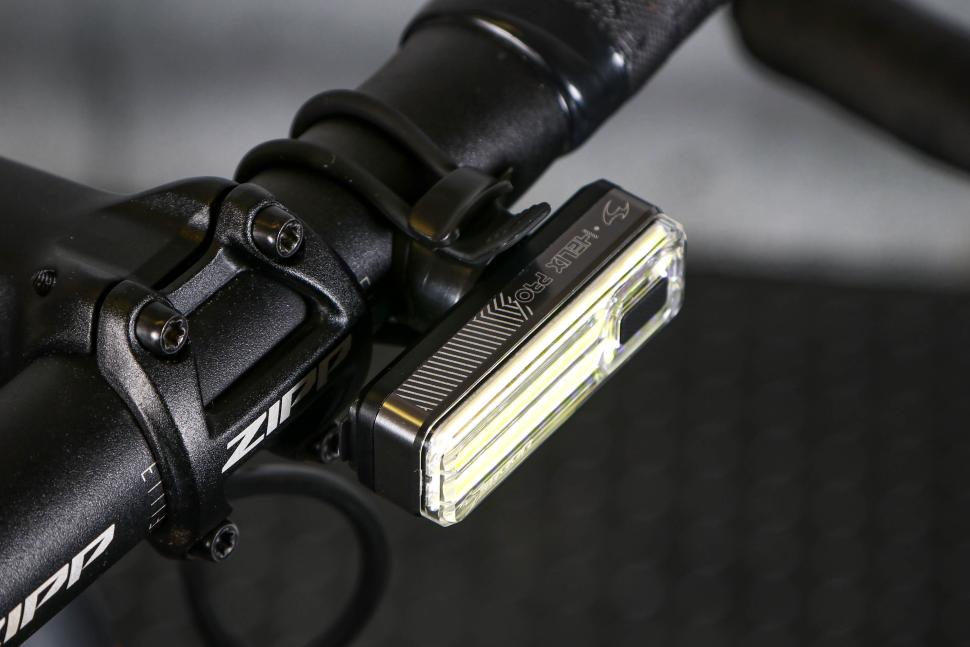






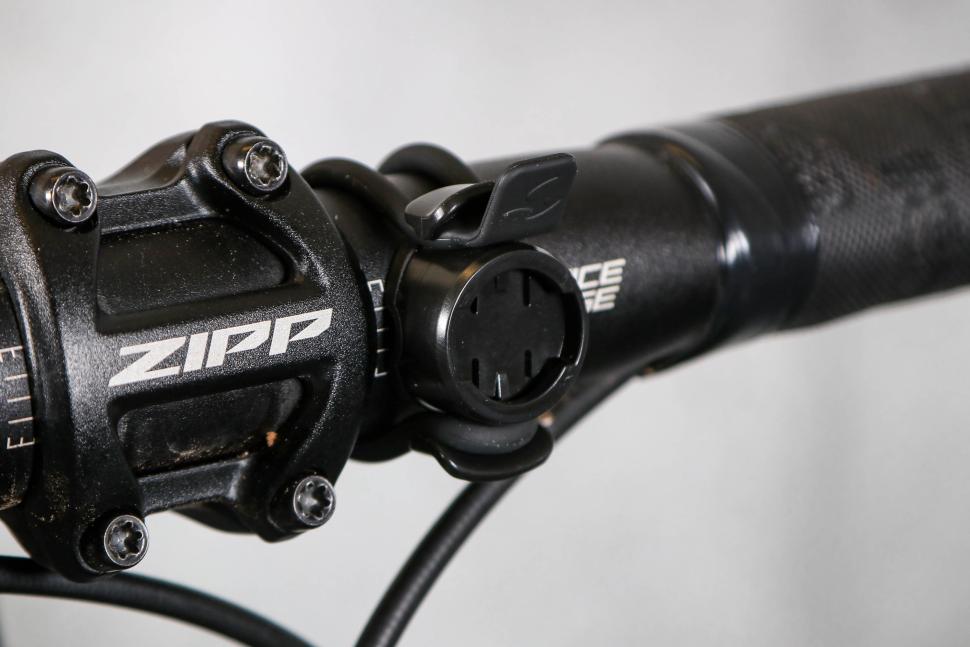
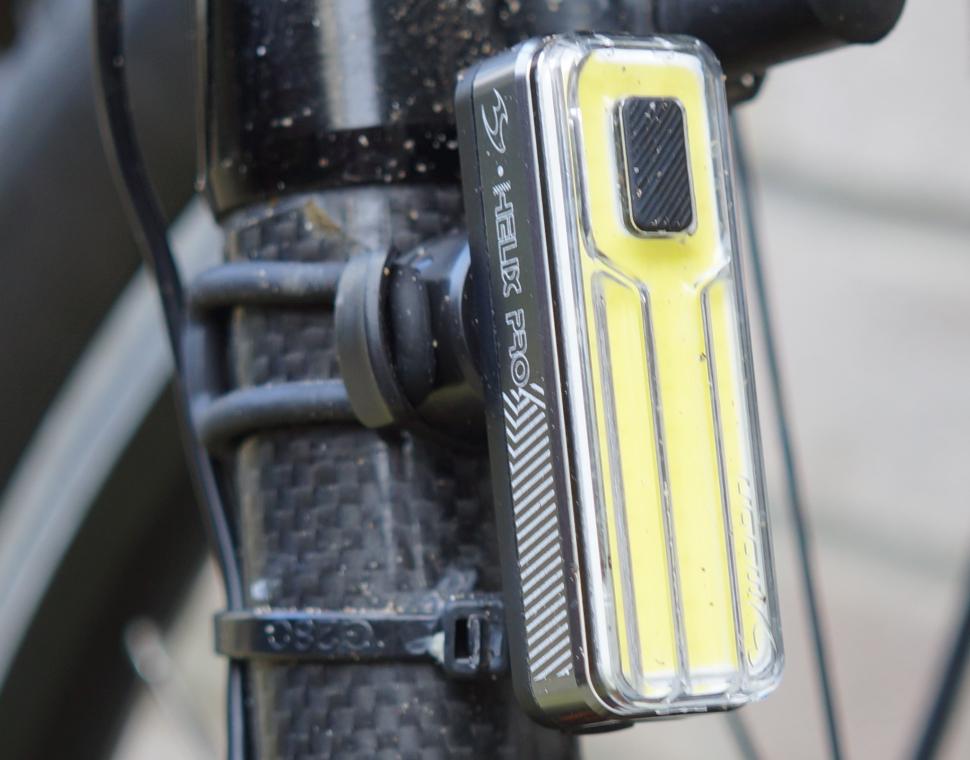

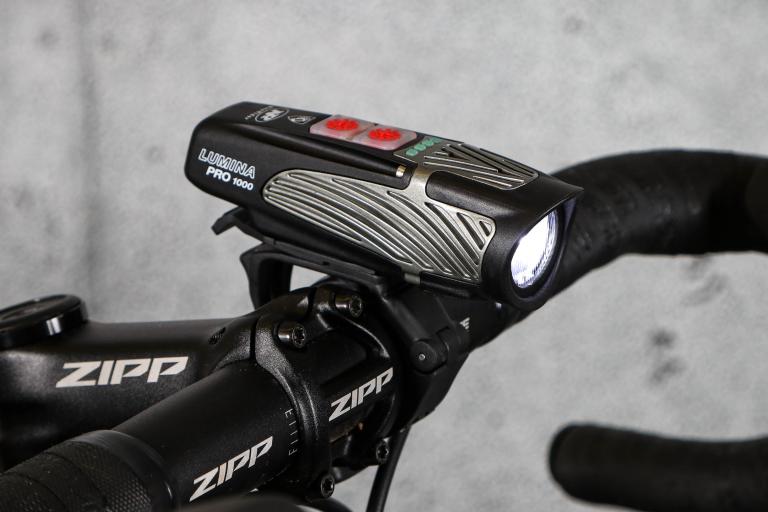


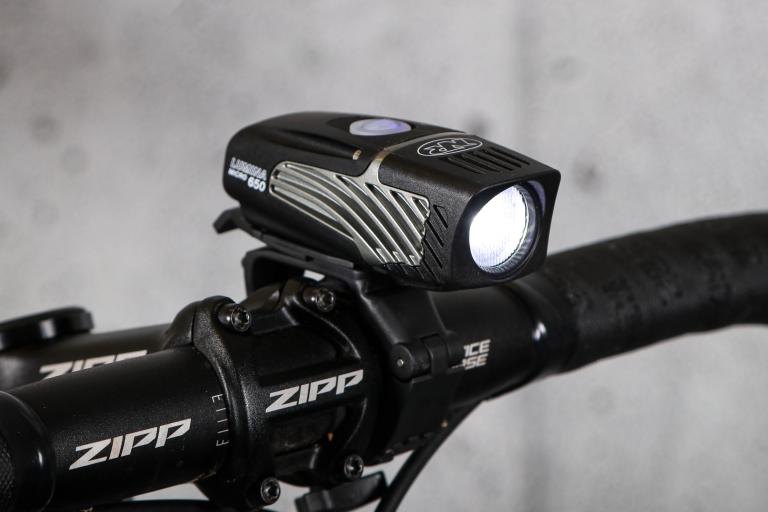
Add new comment
1 comments
uh? Brighter in the dark and dimmer in the light - surely that's the wrong way about. Daylight demands a brighter light to be seen by.